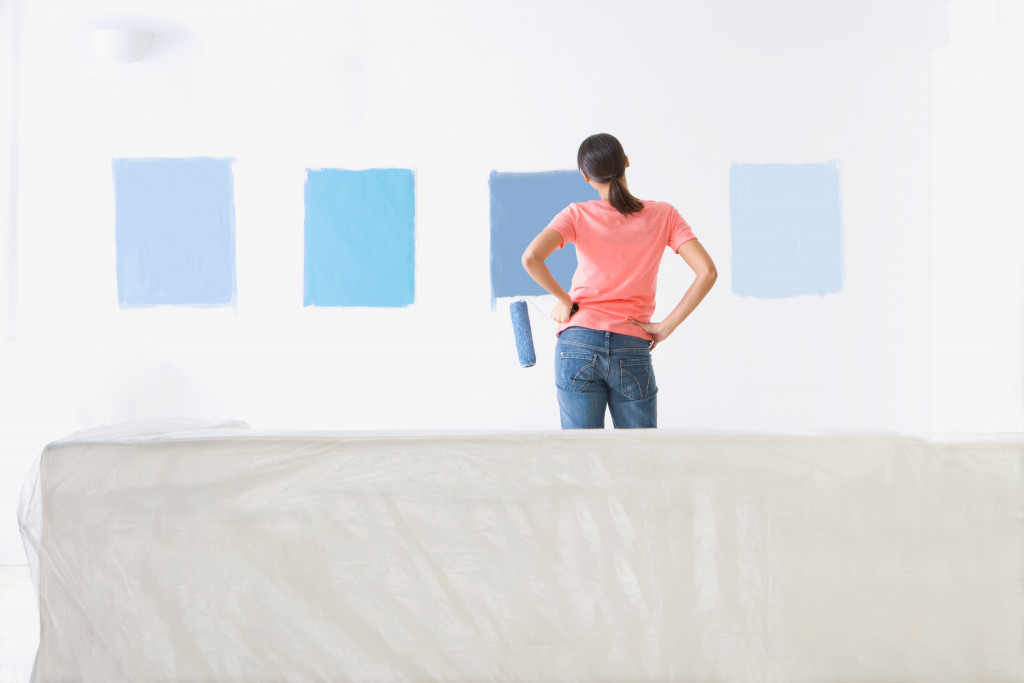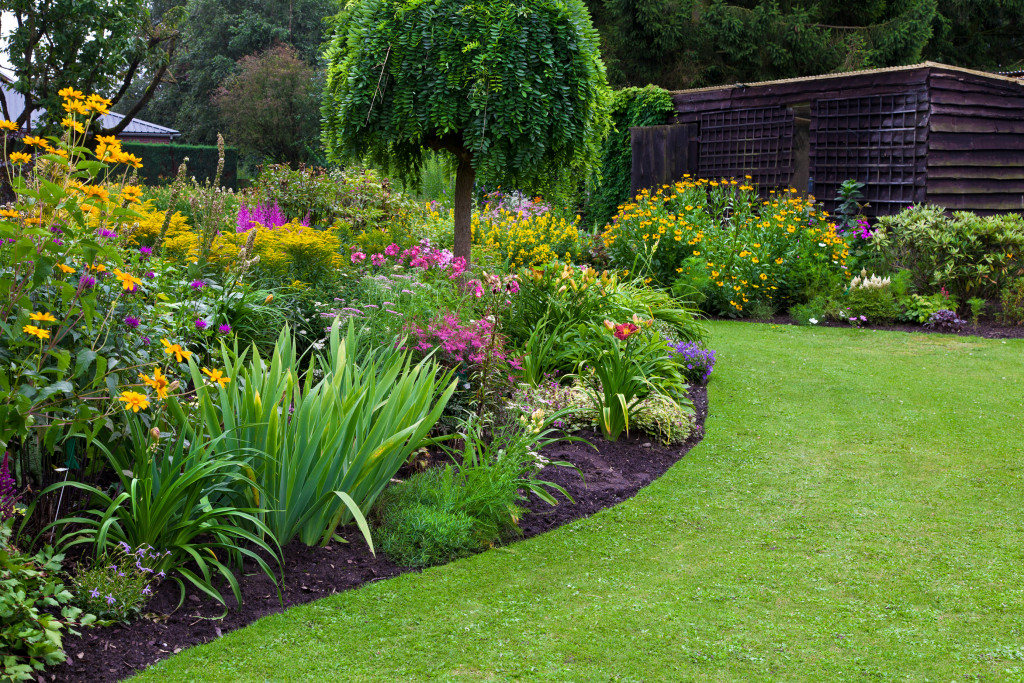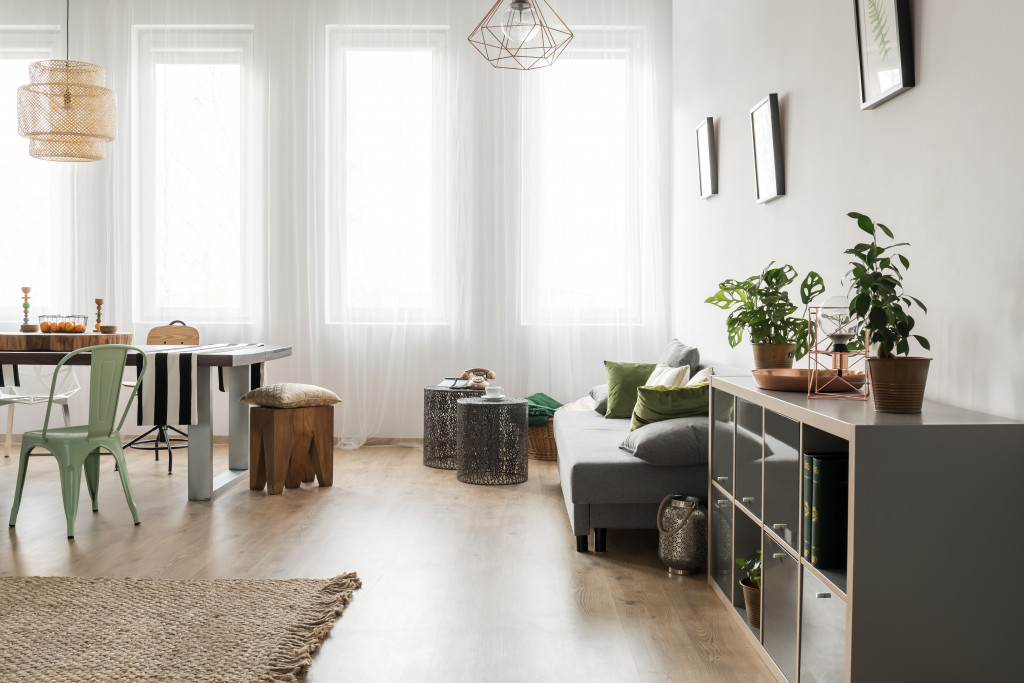- Incorporate natural light through windows, doors, mirrors and reflective surfaces.
- Choose calming colors to create a serene environment.
- Create a comfortable space with soft textures, practical furniture and personal touches.
- Improve indoor air quality with air purifiers and plants.
- Revamp your landscape with gardens and outdoor activities for physical and mental health benefits.
Your home is your sanctuary, and creating an environment that promotes your well-being is essential. Whether you’re planning a complete renovation or a minor update, there are several things you can do to enhance your home’s health and happiness. Here are five tips for renovating your home for well-being.
1. Incorporate Natural Light
Natural light has many benefits for both physical and mental health. It can help regulate your circadian rhythm, boost vitamin D levels, and improve mood.
Here are tips on how you can incorporate natural light:
Utilize Windows and Doors
Make sure to open up any windows and doors in your home during the day so that natural light can enter. You can also consider replacing dated, single-paned windows with double or triple-paned ones for better insulation. Additionally, installing larger windows or even glass doors is another great way to let more light in.
Place Mirrors Strategically
Mirrors can reflect natural light and make a space appear brighter. Hang mirrors on opposite walls to create the illusion of a larger room, or position them across from windows so that they capture more sunlight. If you can’t hang a mirror, place smaller mirrors or reflective surfaces on shelves and other furniture to brighten the room.
Choose Lights That Emulate Natural Light
Standard lightbulbs give off warm yellow tones, less energizing than natural sunlight. If you’re looking for a more energizing light, opt for LED or full-spectrum bulbs that emulate the color of natural light. This type of lighting is especially beneficial in the winter when sunlight is scarce.
Incorporate Light Colors into Your Home
Light and bright colors reflect natural light better than dark hues, so adding lighter wall colors and furniture fabrics can help brighten up a room. White walls are especially helpful for reflecting light around the space, while soft pastels create a peaceful atmosphere. Natural materials such as wood and stone can also bring an inviting warmth to any room.
2. Choose Calming Colors

Colors can have a significant impact on your emotions and mental state. When renovating your home, choose colors that promote calmness and relaxation. Soft hues such as blues, greens, and grays can help create a serene environment, while warm tones like yellows and oranges promote happiness and warmth. Avoid bright, bold colors, as they can be overwhelming and overstimulating.
3. Create a Comfortable Space
Your home should be a place where you can relax and unwind. To create a comfortable space, focus on furniture and decor that’s both functional and cozy. Soft, plush textures such as rugs, pillows, and blankets can make a room feel inviting and comfortable. Choose stylish and practical furniture, and don’t forget to add personal touches such as family photos, artwork, or souvenirs to make your space feel more like home.
4. Prioritize Indoor Air Quality
Indoor air quality is crucial for your health and well-being. Poor air quality can lead to respiratory problems, allergies, and other health issues. To improve the air quality in your home, consider investing in an air purifier or adding indoor plants that can help filter out toxins and pollutants. You can also use natural cleaning products and avoid synthetic fragrances and harsh chemicals.
In addition to investing in an air purifier and adding indoor plants, there are other actions you can take to improve your home’s indoor air quality. Consider checking the seals around and windows for any drafts, which can allow pollutants from outside to enter your home. Additionally, make sure not to block up vents with furniture or curtains, as this can restrict ventilation.
5. Revamp Your Landscape

The outdoors can be just as important for your well-being as the indoors. A beautiful, inviting landscape can provide a sense of respite and relaxation. To revamp your outdoor space, consult a reliable arborist who can help you choose landscaping elements that promote mental health. Arborists can help you select trees and shrubs that provide shelter, color, wildlife habitats and more. They can also work with you to develop a plan for maintaining the landscape so it remains healthy over time.
In Closing
Renovating your home for well-being can tremendously impact your physical and mental health. Incorporate natural light, calming colors, comfortable spaces, clean air, and a revamped landscape to create a home that promotes relaxation and happiness. With these tips, you will create an environment fostering lifelong well-being.

